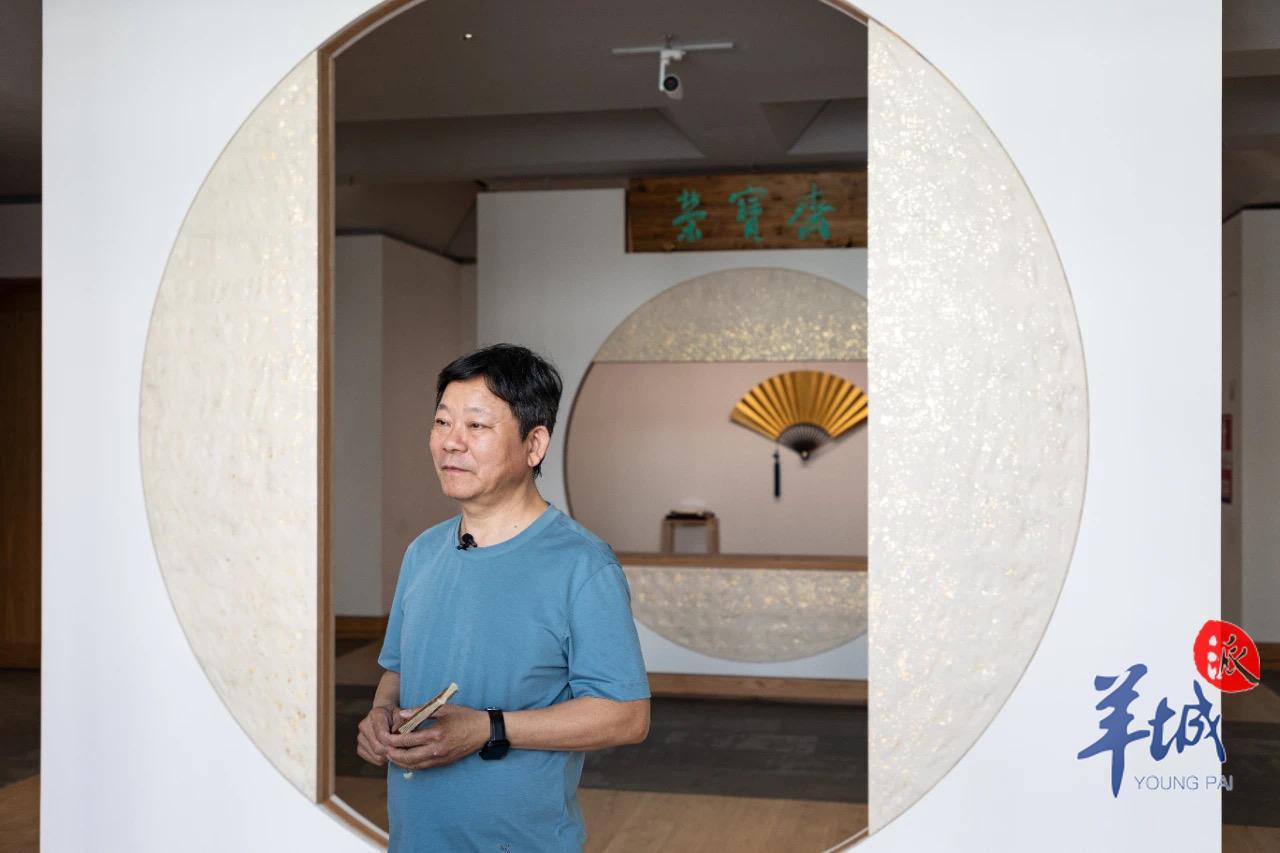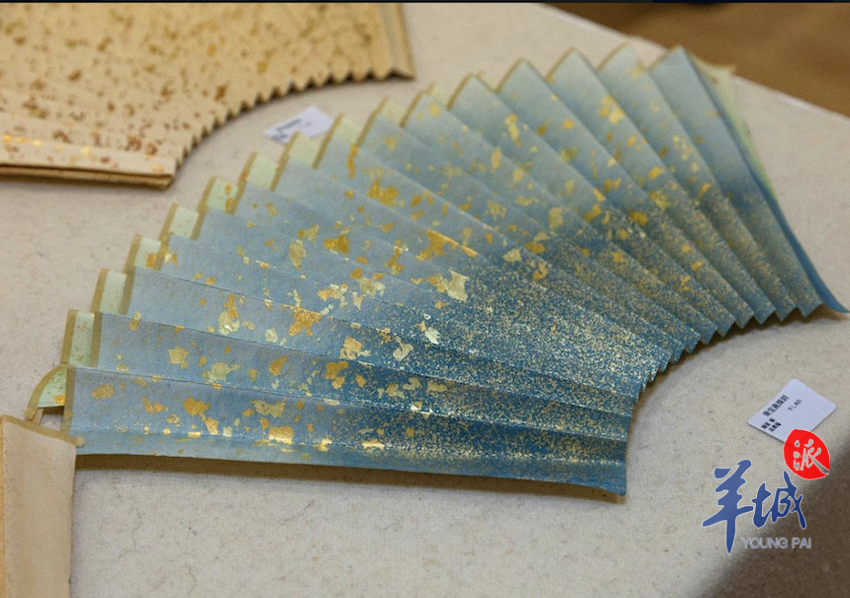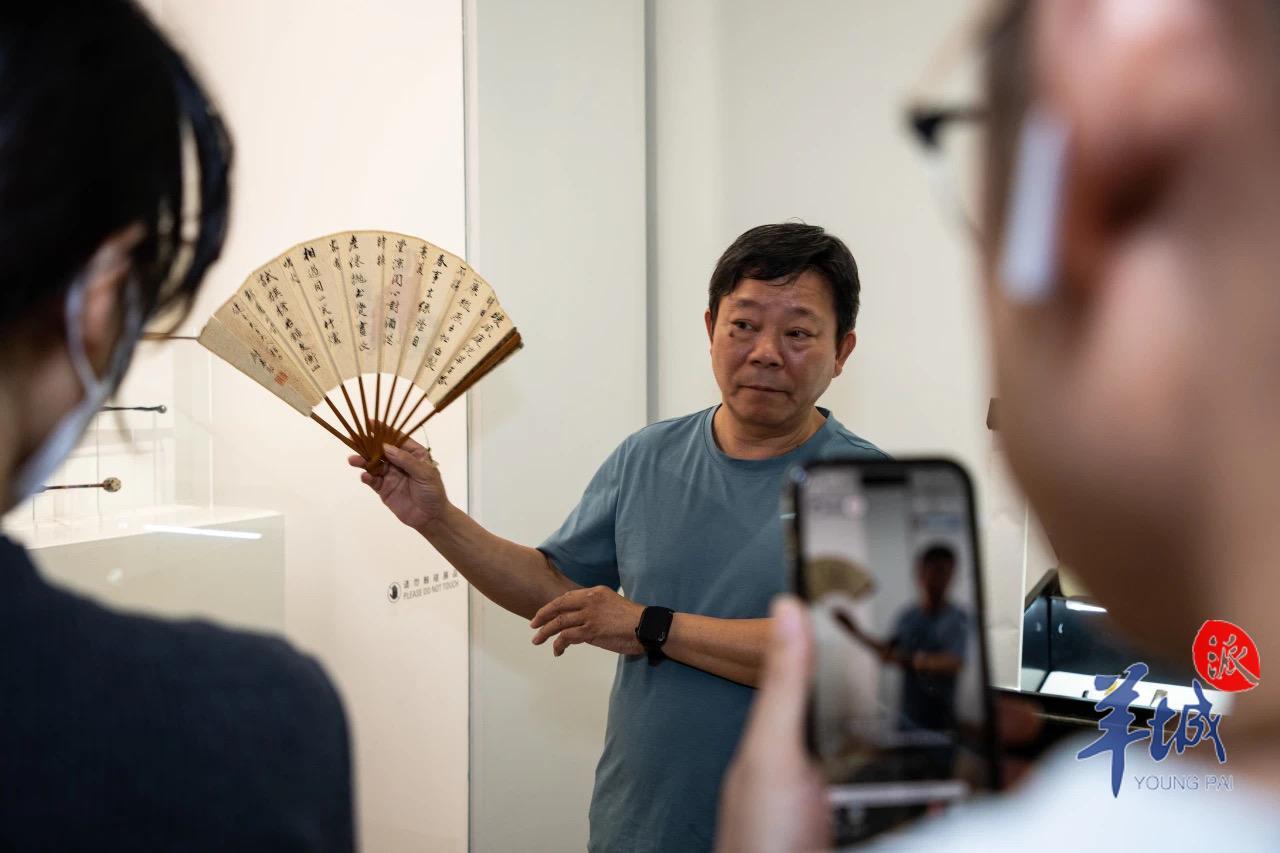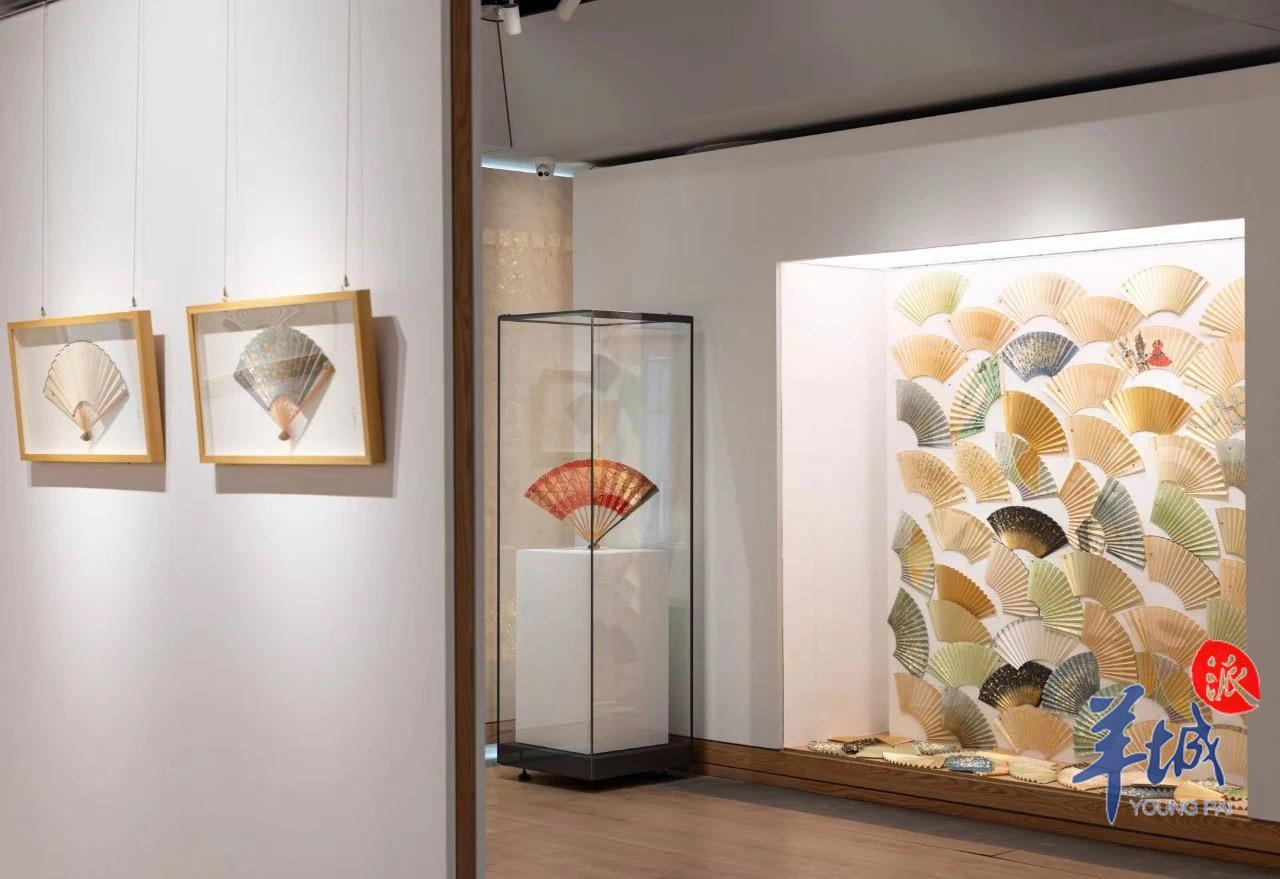
On November 10th, the "Elegance and Benevolence – Joint Exhibition of Wang Jian's Fan Artworks" opened in Shenzhen. The exhibition features over a hundred exquisite Suzhou fans, crafted by Wang Jian, a national intangible cultural heritage inheritor, and his students.

Suzhou fans, historically known as literati fans, are elegant accessories often tucked into sleeves. Influenced by the ancient culture of Jiangnan, the folding fan transformed from a mere cooling tool into a sophisticated item reflecting the personality and demeanor of its owner.

Wang Jian has dedicated over forty years to the inheritance of Suzhou fan craftsmanship. Starting in December 1981 at a Suzhou fan factory, he mastered the three major techniques of fan stick crafting, fan painting, and fan engraving. Since 2000, he has researched historical materials, unearthed artifacts, and handed-down relics related to Suzhou fans, reviving the lost fan sticks and fan craftsmanship from the Ming and Qing dynasties(1368-1911). Since then, he has been focused on the research, restoration, categorization, and promotion of traditional Suzhou fans.

The ancient charm of Suzhou folding fans is showcased in this exhibition. These fans, made from materials like bamboo, wood, or ivory for the bones and resilient paper or silk for the surface, are foldable for easy carrying. Wang Jian's exquisite craftsmanship ensures that the fan sticks are both sturdy and flexible, featuring intricate carving designs. The fan faces are meticulously designed and decorated, often adorned with calligraphy and painting, displaying rich artistic charm.
The exhibition highlights several of Wang Jian's representative works, showcasing his unique techniques in restoring fan sticks and crafting fan faces. Wang Jian explained to attendees on the opening day, "Both the 'gold foil' of the fan face and the'sticks' of the fan are crucial parts in making Suzhou fans." Many post-95 generation attendees gained a new understanding of the heritage and innovation of Suzhou fan craftsmanship, an intangible cultural heritage item, by learning about the stories behind the exhibited works and the essence of the techniques involved.
One notable piece in the exhibition is the "Folding Fan with Black Stick and Gold Foil," representing the pinnacle of Ming Dynasty folding fans. Popular in the early to mid-Ming Dynasty, this fan was favored by nobles and literati. According to a quote from Ruan Kuisheng's"Cha Yu Ke Hua","During the Ming Dynasty, people were fond of folding fans adorned with gold foil. Even the folding fans bestowed by the emperor were decorated with gold foil." However, due to the intricate nature of mud gold craftsmanship, the technique gradually declined and was eventually lost after the late Ming Dynasty.

Over the past forty years, Wang Jian has continuously explored various related fields in his industry. He has summarized over a hundred processes involved in Suzhou fan production, adhering to the philosophy that Suzhou fans should prioritize people, lightness, and practicality. He has figured out lost fan-crafting techniques from hundreds of years ago, including the Hehuan fan, round fan, Ming-style lacquered fan sticks, and a series of Ming golden fans, and successfully restored the "Jade Bamboo Fan". He has also reintroduced lost fan face techniques like the"Old Alum Fan Face" and"Gold Foil Fan Face" in contemporary times.
The exhibition will run until November 20th and will then travel to the Rongbaozhai Guangzhou branch.
明清失传苏州扇艺重现,深圳广州可看!
11月10日,《大雅仁风——王健扇艺作品展师徒联展》在深圳开幕。展览展出百余件精美苏扇作品,出自国家级非物质文化遗产制扇技艺传承人王健及其学生之手。
苏扇,古称文人扇,怀袖雅物。在古代江南文化的熏陶下,折扇从一件扇风纳凉的工具,逐渐演变成彰显主人气质和风采的文人雅玩。
据悉,王健传承苏州制扇技艺四十多年。1981年12月,王健初入苏州扇厂,先后习得扇骨、扇面、扇刻三大技艺,2000年开始对苏扇折扇的史料、出土文物、传世文物等进行研究,复活了失传的明清苏扇扇骨和扇艺。至今一直致力于传统苏扇的研究、恢复、整理与推广。
苏州折扇作为古老的文人雅物,在本次展览中展示了其独特的魅力。折扇以竹木或象牙等为骨,韧纸或绫绢为面,可折叠便于携带。扇骨的材质和外观造型非常重要,王健的制扇工艺精湛,使扇骨既坚硬又柔韧,并刻有精美的雕刻艺术。扇面则经过精心设计和装饰,配以书画,展现出丰富的艺术魅力。
展览中展出多件王健代表作品,体现其在复原扇骨和扇面工艺上的独特技巧。“扇面的‘金’与扇子的‘骨’,都是制作苏扇时最重要的考虑因素。”王健在开幕当天向扇友们进行导览,不少“95后”观众在现场借此了解作品背后的制作故事和技艺精髓,对非遗苏扇制扇技艺的传承与创新有全新的体验。
如本次展出的“乌骨泥金扇”是明扇最杰出的代表,于明代早中期曾风靡一时,从王公贵族到文人雅士,无不趋之若鹜。阮葵生《茶余客话》说:“明人皆尚金扇,即上方赐予,亦皆金面。”然而,由于泥金工艺极为繁难,晚明以后,泥金扇便日渐式微乃至失传。
四十多年来,王健不断探索本行业相关领域,归纳总结苏扇制作过程中的百余道工序,始终秉承苏扇以人为本,以轻为贵,以实用为根本的制扇理念,贯通了百余道制扇工序而“独立成章”,重现了失传数百年的合欢扇,腰扇,明式火漆扇骨、系列明金扇等制扇技艺,成功复原了以温润的“水磨玉竹”扇,并将失传的扇面工艺“老矾扇面”和“泥金扇面”在当代重现。
展览将持续至11月20日,随后将巡展至荣宝斋广州分店。
文|记者 朱绍杰
图|主办方提供
译|刘佳慧
责编 | 王楠
校对 | 赵丹丹
-
Revival of lost Suzhou Fan art from the Ming and Qing Dynasties exhibited in Shenzhen and Guangzhou
2023-11-13 22:48:39 -
Belarusian diplomat hopeful that Guangdong-Belarus will receive more projects
2023-11-13 21:35:46 -
Big procession celebrating the birth of Cantonese Opera's founder with martial arts performance
2023-11-13 21:35:46 -
Chinese mainland tourists spark offline shopping in Macau during Double Eleven Festival
2023-11-13 21:35:46






